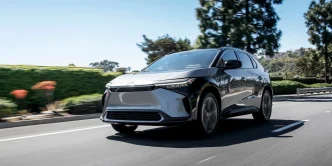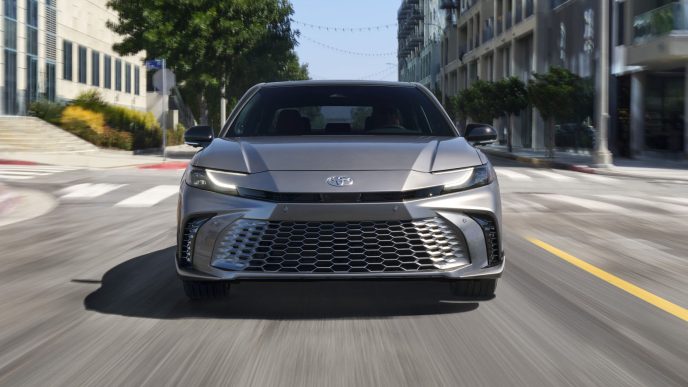Toyota has officially unveiled its latest electric SUV, the Urban Cruiser, a model that slots between the Yaris Cross and C-HR in the automaker’s European lineup. The compact SUV, which shares much of its design and architecture with the Suzuki e-Vitara, features a few Toyota-specific design elements and updated details.
Available in both front-wheel-drive (FWD) and all-wheel-drive (AWD) configurations, the Urban Cruiser aims to offer a spacious interior despite its compact size, with Toyota emphasizing the vehicle’s practicality and energy-efficient features.

Measuring 4,285 mm (168.7 inches) in length, the Urban Cruiser draws design inspiration from last year’s Urban SUV Concept, though it has been toned down for production to appeal to consumers. Its distinctive front face features hammerhead headlights and unique tail light graphics, setting it apart from the Suzuki e-Vitara, but much of the exterior remains similar.
The SUV’s interior boasts a digital cockpit with a 10.25-inch instrument cluster and a 10.1-inch infotainment screen, along with a floating center console adorned in glossy black inserts. Available options include a JBL premium audio system and a fixed sunroof.

The Urban Cruiser’s interior space is comparable to larger SUVs, thanks to its EV-specific architecture and a 2,700 mm (106.3 inches) wheelbase—140 mm (5.5 inches) longer than the Yaris Cross. The rear seats come with sliding and reclining functions to enhance comfort and flexibility. Powertrain options include a 142 hp (106 kW / 144 PS) or 172 hp (128 kW / 174 PS) single-motor setup for the FWD version, and a 182 hp (135 kW / 184 PS) dual-motor setup for the AWD model.
Two battery options are offered: a 49 kWh battery for FWD models and a larger 61 kWh battery for both FWD and AWD variants. The Urban Cruiser features energy-saving technologies such as a heat pump for the A/C and manual battery pre-heating, making it suitable for colder climates.

Pricing and availability for the Toyota Urban Cruiser will be confirmed closer to its European market launch, expected sometime next year. The vehicle will make its debut at the 2025 Brussels Motor Show in January. Toyota has committed to achieving zero CO2 emissions in Europe by 2035 and aims to have 15 zero-emission vehicles in its lineup by 2026, including six battery electric vehicles (BEVs) on dedicated platforms.













